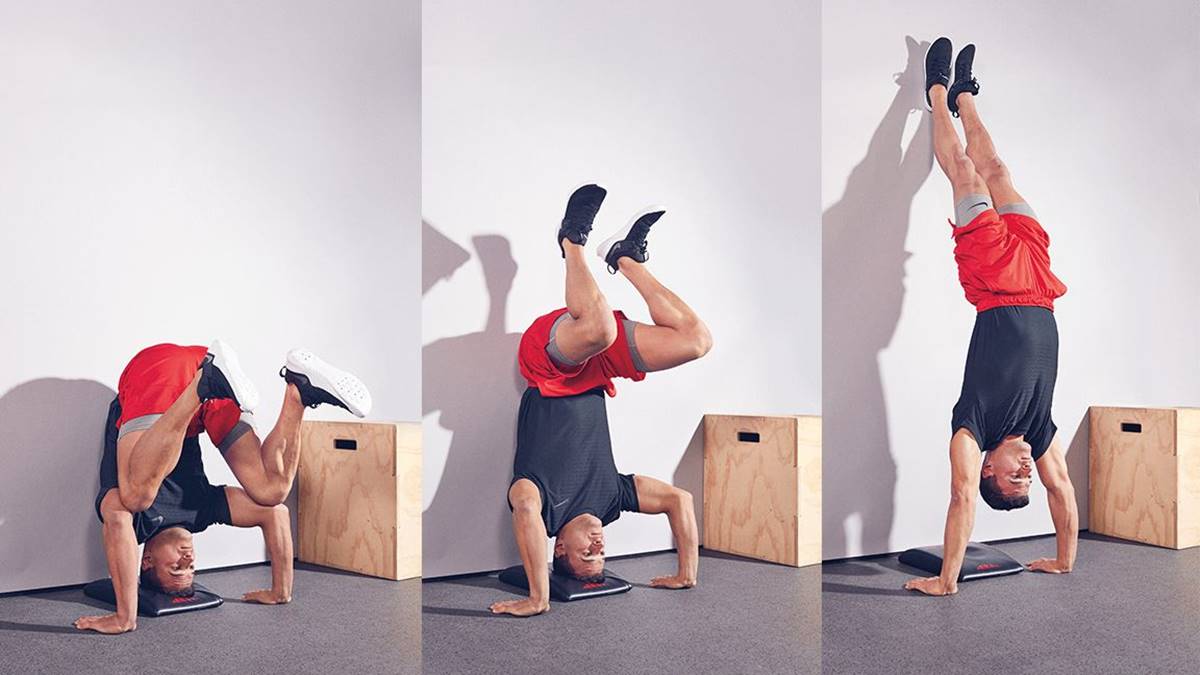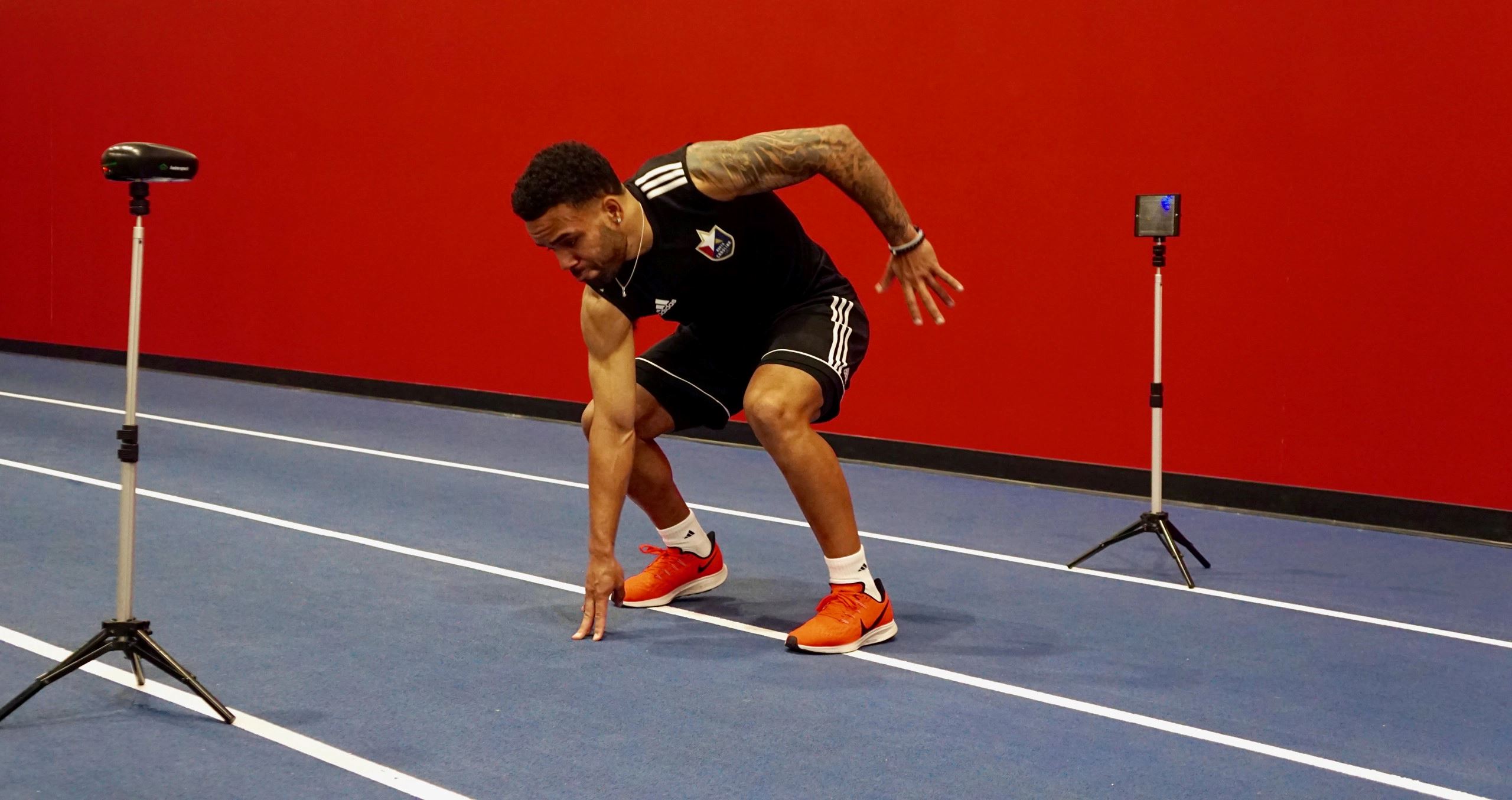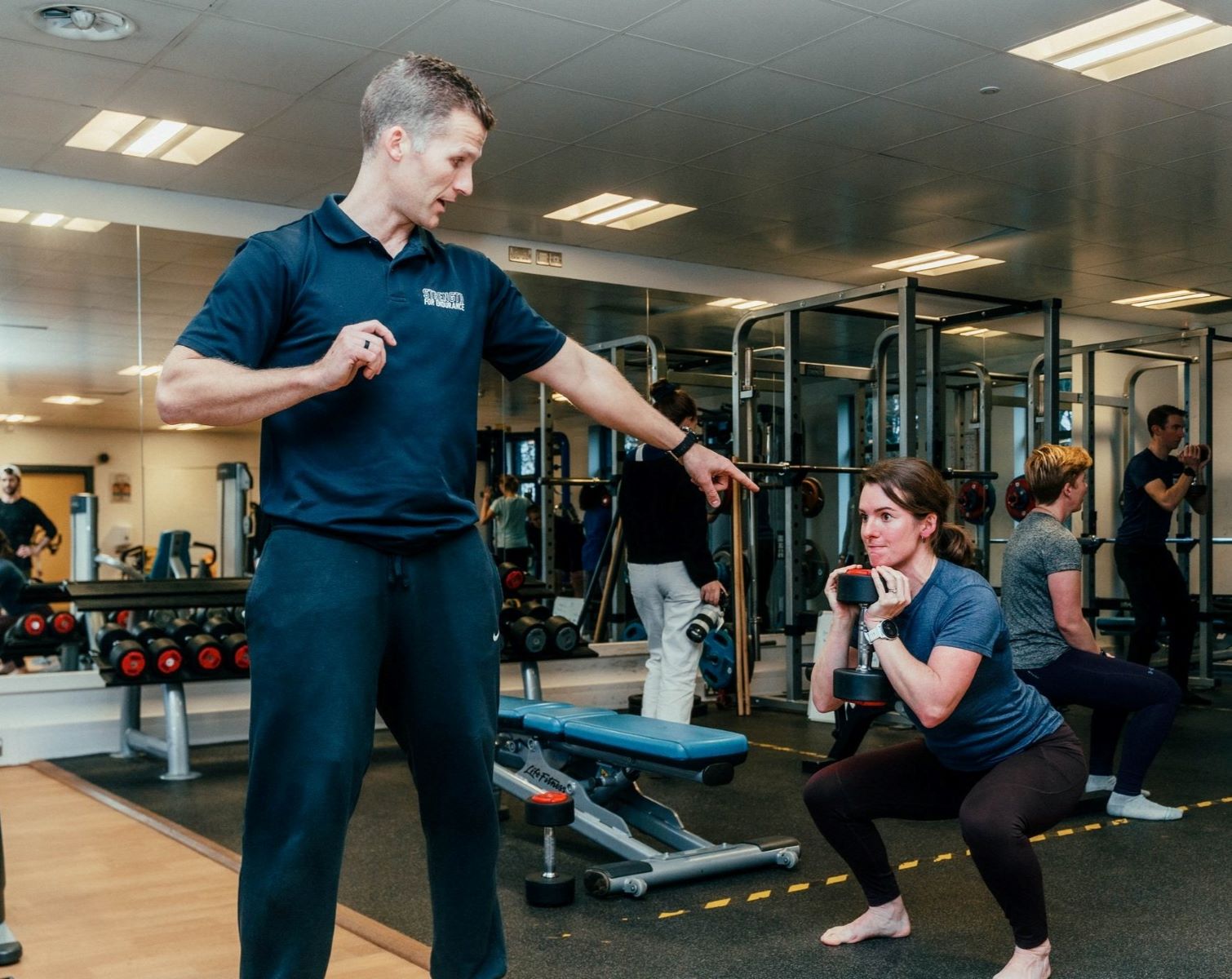Home>Misc>Featured>Which Of The Following Variables Are Manipulated When Designing An Interval Training Program?


Featured
Which Of The Following Variables Are Manipulated When Designing An Interval Training Program?
Modified: March 1, 2024
Discover the key variables in a featured interval training program and learn how to manipulate them for optimal results.
Introduction
Interval training is a popular and effective method of exercise that involves alternating periods of intense activity with periods of rest or lower intensity. It is widely used in various forms of fitness training, including cardiorespiratory training and strength training. The key to a successful interval training program lies in manipulating several variables to create the desired training effect. These variables can be adjusted to target specific fitness goals, such as improving endurance, increasing strength, or enhancing overall fitness.
In this article, we will explore the variables that can be manipulated when designing an interval training program. By understanding how to manipulate these variables, individuals can tailor their workouts to best suit their individual needs and goals.
Before we dive into the specifics, it’s important to note that interval training can be beneficial for individuals of all fitness levels. Whether you are a beginner looking to start a new exercise routine or an experienced athlete aiming to enhance performance, interval training can provide a challenging and effective workout.
Now, let’s delve into the variables that can be manipulated when designing an interval training program.
Variables in Interval Training Program Design
When designing an interval training program, there are several key variables that can be manipulated to achieve specific training outcomes. These variables include intensity, duration, work-to-rest ratio, exercise selection, and frequency.
1. Intensity: Intensity refers to the level of effort or workload during the high-intensity intervals of the workout. It can be manipulated by adjusting the speed, resistance, or weight used during the intense intervals. Higher intensity intervals will elicit a greater cardiovascular and muscular response, leading to increased calorie burn and improved fitness.
2. Duration: Duration refers to the length of time for each interval. It can be adjusted by increasing or decreasing the length of high-intensity and rest intervals. Longer intervals will challenge endurance, while shorter intervals with higher intensity can improve speed and power.
3. Work-to-Rest Ratio: The work-to-rest ratio determines the ratio of active work to rest or low-intensity recovery. This variable can be adjusted to provide different training stimuli. For example, a 1:1 ratio means equal work and rest time, while a 2:1 ratio means double the work time compared to rest. A shorter rest period will increase the overall intensity of the workout.
4. Exercise Selection: The choice of exercises included in the interval training program can also be manipulated. Different exercises target specific muscles or movement patterns, allowing for a more comprehensive and balanced workout. By incorporating a variety of exercises, individuals can engage different muscle groups and avoid overuse injuries.
5. Frequency: Frequency refers to the number of interval training sessions performed per week. This variable can be adjusted based on an individual’s goals, fitness level, and schedule. Beginners may start with two to three sessions per week, while advanced individuals can aim for four to six sessions.
Each of these variables can be adjusted to create a customized interval training program that aligns with an individual’s goals and abilities. It’s important to note that the variables do not work in isolation; they interact with each other to create the desired training effect.
Now that we have explored the variables in interval training program design, let’s dive into how each of these variables can be manipulated to optimize your training.
Manipulating Intensity
Intensity is a crucial variable in interval training program design as it directly impacts the level of effort exerted during the high-intensity intervals. Manipulating intensity allows individuals to challenge their cardiovascular fitness, build strength, and improve overall endurance.
To manipulate intensity effectively, there are several strategies that can be employed:
- Adjusting Speed: For cardiovascular-based exercises such as running, cycling, or swimming, adjusting the speed can increase or decrease the intensity. By increasing the speed during the high-intensity intervals, the heart rate increases, causing the body to work harder and burn more calories.
- Adding Resistance: In strength-based exercises, adding resistance through weights or resistance bands can increase the intensity. This helps to build strength and muscle endurance. For example, performing weighted squats or bicep curls during the high-intensity intervals can create a challenging workout.
- Modifying Weight: In weightlifting exercises, manipulating the weight used during the high-intensity intervals can increase or decrease intensity levels. Increasing the weight forces the muscles to work harder, leading to greater strength gains.
It’s important to gradually increase intensity over time to prevent injury and allow the body to adapt. Beginners may start with lower intensity intervals and progressively increase intensity as they become more comfortable and fit.
By manipulating intensity in an interval training program, individuals can push their limits, improve cardiovascular fitness, and build strength. However, it is crucial to listen to the body and understand individual limitations, ensuring a safe and effective workout.
Now that we’ve explored the manipulation of intensity, let’s move on to the next variable: manipulating duration.
Manipulating Duration
The duration of intervals plays a critical role in interval training program design as it determines the length of time for each high-intensity and rest interval. Manipulating duration allows individuals to target specific fitness goals, such as improving endurance, increasing speed, or enhancing power.
Here are some strategies for manipulating duration effectively:
- Increasing Interval Length: One way to manipulate duration is by increasing the length of the high-intensity intervals. Longer intervals challenge endurance by pushing the cardiovascular system to sustain effort over an extended period. For example, instead of running for 1 minute at a high intensity, you can increase it to 2 or 3 minutes.
- Shortening Interval Length: Conversely, shortening the high-intensity intervals and increasing the intensity can improve speed and power. Shorter intervals push the anaerobic energy system, allowing individuals to generate maximum effort for a shorter period. For instance, sprinting for 20 seconds at maximum effort followed by 10 seconds of rest.
- Modifying Rest Intervals: Manipulating the duration of rest intervals is another way to enhance the training effect. Shorter rest intervals increase the overall intensity of the workout as it reduces the recovery time between high-intensity intervals. On the other hand, longer rest intervals allow for more complete recovery, enabling individuals to sustain high-intensity efforts throughout the workout.
It’s important to note that the duration of intervals should be adjusted based on an individual’s fitness level, goals, and training capacity. Beginners may start with shorter intervals and gradually progress to longer intervals as their fitness improves.
By manipulating duration effectively, individuals can customize their interval training program to meet their specific goals and challenge different energy systems. Whether it’s improving endurance, speed, or power, the duration of intervals plays a crucial role in achieving desired fitness outcomes.
Now that we’ve covered manipulating duration, let’s move on to the next variable: manipulating the work-to-rest ratio.
Manipulating Work-to-Rest Ratio
The work-to-rest ratio is a key variable in interval training program design as it determines the ratio of active work to rest or low-intensity recovery. Manipulating the work-to-rest ratio allows individuals to create different training stimuli and elicit specific adaptations within the body.
Here are some strategies for manipulating the work-to-rest ratio effectively:
- Equal Ratio: A 1:1 work-to-rest ratio means equal work and rest time. This is a common ratio used in interval training programs and provides a balanced approach to training. For example, a 30-second sprint followed by 30 seconds of rest.
- Unequal Ratio: Adjusting the work-to-rest ratio to create an unequal ratio can increase the overall intensity of the workout. For instance, a 2:1 ratio means working for 30 seconds and resting for 15 seconds. This shorter rest period challenges the body to work harder and enhances cardiovascular fitness.
- Varying Ratio: Another approach is to vary the work-to-rest ratio within a single workout session. This can involve changing the intensity or duration of work and rest intervals throughout the session. This variation keeps the workout challenging and prevents the body from adapting to a specific pattern.
It’s important to choose a work-to-rest ratio that aligns with an individual’s fitness level, goals, and training capacity. Beginners may start with equal or slightly longer rest periods to allow for adequate recovery. Advanced individuals seeking a more intense workout may opt for shorter rest periods or variations in the ratio.
By manipulating the work-to-rest ratio effectively, individuals can create a training program that challenges different energy systems, enhances endurance, and improves overall fitness. This variable adds variety and flexibility to interval training, allowing for customization based on specific goals and preferences.
Now that we’ve covered manipulating the work-to-rest ratio, let’s move on to the next variable: manipulating exercise selection.
Manipulating Exercise Selection
Exercise selection is a critical variable in interval training program design as it determines the specific movements and muscle groups targeted during the workout. Manipulating exercise selection allows individuals to engage different muscles, improve overall strength and endurance, and prevent boredom.
Here are some strategies for manipulating exercise selection effectively:
- Compound Exercises: Incorporating compound exercises that involve multiple muscle groups at the same time is an efficient way to maximize the benefits of interval training. Exercises like squats, burpees, push-ups, and lunges engage multiple muscle groups, leading to a more comprehensive and calorie-burning workout.
- Isolation Exercises: In addition to compound exercises, including isolation exercises that focus on specific muscle groups can help individuals target weak areas or improve muscular imbalances. Exercises like bicep curls, tricep extensions, and lateral raises can be included in the interval training program to enhance muscular strength and definition.
- Plyometric Exercises: Adding plyometric exercises, such as jump squats, box jumps, and explosive push-ups, can increase power and enhance athletic performance. These high-impact exercises require a burst of energy and engage fast-twitch muscle fibers, improving speed and agility.
- Cardiovascular Exercises: Incorporating cardiovascular exercises like running, cycling, or swimming can provide an excellent cardiovascular workout. These exercises increase heart rate and improve cardiovascular fitness, making them ideal for interval training.
By incorporating a variety of exercises in the interval training program, individuals can prevent plateaus, stimulate different muscle groups, and improve overall fitness. It’s important to choose exercises that align with an individual’s fitness level, goals, and preferences.
Additionally, proper form and technique should be emphasized to prevent injury and ensure maximum benefit from each exercise. Seeking guidance from a qualified fitness professional or personal trainer can be beneficial, especially for beginners or individuals with specific fitness goals.
Now that we’ve covered manipulating exercise selection, let’s move on to the final variable: manipulating frequency.
Manipulating Frequency
Frequency refers to the number of interval training sessions performed per week. Manipulating frequency is an important variable in interval training program design as it determines the overall volume and consistency of the workouts.
Here are some considerations for manipulating frequency effectively:
- Beginner Level: For individuals new to interval training, starting with two to three sessions per week is recommended. This allows the body to adapt gradually to the increased workload and reduce the risk of overtraining or injury.
- Intermediate Level: Once individuals have developed a good fitness base and are comfortable with interval training, progressing to four to five sessions per week can be beneficial. This higher frequency increases the opportunity for progress and improvement.
- Advanced Level: Advanced individuals who have been consistently practicing interval training can aim for six or more sessions per week. At this level, a well-structured training program with proper rest and recovery is crucial to prevent overtraining and optimize performance.
It’s important to note that the frequency of interval training should be balanced with other forms of exercise and rest days to allow for recovery and prevent overuse injuries. Listening to the body and adjusting the frequency based on individual needs and recovery capabilities is essential.
Additionally, incorporating active recovery days or lower-intensity workouts between high-intensity interval sessions can aid in recovery and prevent burnout.
By manipulating frequency effectively, individuals can find the right balance between training and recovery, optimizing performance and results. However, it’s crucial to prioritize quality over quantity and ensure adequate rest and recovery for the body to adapt and respond positively to the training stimulus.
Now that we’ve covered manipulating frequency, let’s summarize the key points we’ve discussed throughout this article.
Conclusion
Interval training is a versatile and effective method of exercise that can be tailored to individual goals and preferences. By manipulating variables such as intensity, duration, work-to-rest ratio, exercise selection, and frequency, individuals can create a customized interval training program that provides optimal results.
Manipulating intensity allows individuals to challenge their cardiovascular fitness and build strength. Adjusting the duration of intervals targets specific fitness goals, such as improving endurance or increasing speed. Varying the work-to-rest ratio creates different training stimuli and elicits specific adaptations within the body. Choosing diverse exercises engages different muscle groups and prevents boredom. Manipulating the frequency of interval training sessions allows for the appropriate balance between training stimulus and recovery.
It is important to adjust these variables based on individual fitness levels, goals, and preferences. Beginners may start with lower intensities, shorter durations, and fewer sessions per week, gradually progressing as fitness improves. Advanced individuals can push their limits with higher intensities, longer durations, and more frequent sessions.
Remember to prioritize safety and proper form during interval training. If you are new to interval training or have specific goals, consult with a qualified fitness professional or personal trainer who can provide guidance and create a tailored program suited to your needs.
Incorporating interval training into your fitness routine can lead to improved cardiovascular fitness, increased strength, enhanced endurance, and overall better fitness and health. So, start manipulating those variables and design an interval training program that works for you!








